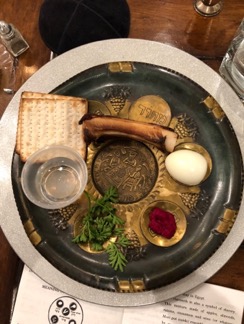Background Information:
The informant is a friend of mine. They have been born and raised in Southern California, but his family has familial roots in Israel and Morocco. Their grandmother emigrated from Morocco to the US.
Main Content:
ME: So can you tell me about your family’s unique Passover tradition?
YS: So during Passover dinner, we leave an extra table, or not an extra table, an extra chair, at our dinner table and we leave the front door open when we do the Haggadah, which when you tell stories. And we use the extra chair as a way to signify our dead family members being there with us. So whenever, we like pray, at that time at the table, we like bless our dead family members.
ME: That’s really cool, is it a common tradition or is it just something that your family does?
YS: I’m pretty sure its just my family, my grandma like grew up doing it and taught is to do it too.
ME: Do you believe that the spirits are really there or is it more just for symbolism?
YS: Yeah, we believe that the spirits are really there. One year, when I was younger, there was like wind happening and our door like flew open and it was really windy in the house. My grandma told us, “That’s my husband!”.
ME: Wow, really crazy, thank you.
Context:
This interview happened at my apartment.
Thoughts:
This tradition is really interesting because it takes a formal religious tradition like Passover, and adds its own touch to it. It is even more interesting because the informant’s family actually experienced the ghost or spirit of the informant’s grandmother’s deceased husband, which really cemented their belief in the tradition. The informant told me that their grandmother grew up practicing this tradition in Morocco, before she moved to the US. I am not sure if this is widely practiced in Morocco or not, but my informant claims that it isn’t. Regardless, I think that this is a really great way to honor dead family members and still feel a connection with them, and even physically interact with them, as in the case of the informant.

